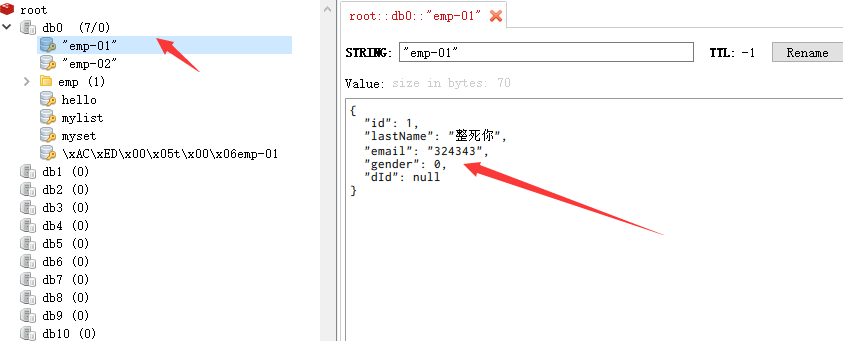1 redis is installed on linux
- Install docker
yum install docker
2) open docker
service docker start
2. Install Redis
Go to this website to find out how to install https://hub.docker.com
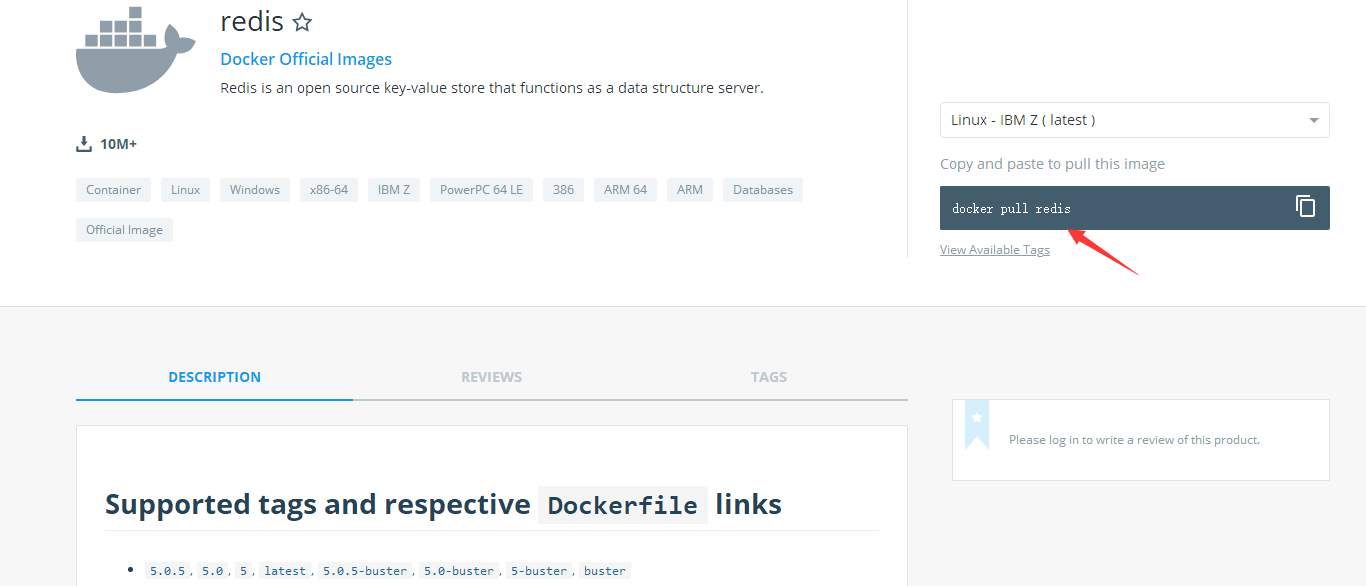

Open redis

3 create a springBoot project (details are not covered in detail)
pom.xml file
<?xml version="1.0" encoding="UTF-8"?>
<project xmlns="http://maven.apache.org/POM/4.0.0" xmlns:xsi="http://www.w3.org/2001/XMLSchema-instance"
xsi:schemaLocation="http://maven.apache.org/POM/4.0.0 http://maven.apache.org/xsd/maven-4.0.0.xsd"> <modelVersion>4.0.0</modelVersion> <parent> <groupId>org.springframework.boot</groupId> <artifactId>spring-boot-starter-parent</artifactId> <version>2.1.6.RELEASE</version> <relativePath/> <!-- lookup parent from repository --> </parent> <groupId>com.mao</groupId> <artifactId>spring-cache</artifactId> <version>0.0.1-SNAPSHOT</version> <name>spring-cache</name> <description>Demo project for Spring Boot</description> <properties> <java.version>1.8</java.version> </properties> <dependencies> <dependency> <groupId>org.springframework.boot</groupId> <artifactId>spring-boot-starter-jdbc</artifactId> </dependency> <dependency> <groupId>org.springframework.boot</groupId> <artifactId>spring-boot-starter-data-redis</artifactId> </dependency> <dependency> <groupId>org.springframework.boot</groupId> <artifactId>spring-boot-starter-web</artifactId> </dependency> <dependency> <groupId>org.mybatis.spring.boot</groupId> <artifactId>mybatis-spring-boot-starter</artifactId> <version>2.0.1</version> </dependency> <dependency> <groupId>mysql</groupId> <artifactId>mysql-connector-java</artifactId> <version>5.1.47</version> <scope>runtime</scope> </dependency> <dependency> <groupId>org.springframework.boot</groupId> <artifactId>spring-boot-starter-test</artifactId> <scope>test</scope> </dependency> </dependencies> <build> <plugins> <plugin> <groupId>org.springframework.boot</groupId> <artifactId>spring-boot-maven-plugin</artifactId> </plugin> </plugins> </build>
</project>
4. Provide an entity class / / this file is from the shangxue school.
public class Employee implements Serializable
private Integer id; private String lastName; private String email; private Integer gender; //Gender 1 male 0 female private Integer dId;
... and... (abbreviated)
}
5. For redis customers, please install it yourself
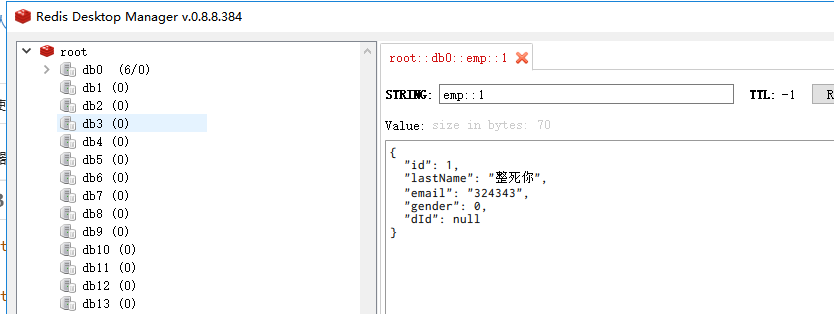
Relevant knowledge points can be learned on this website http://www.redis.cn There are many cases in it
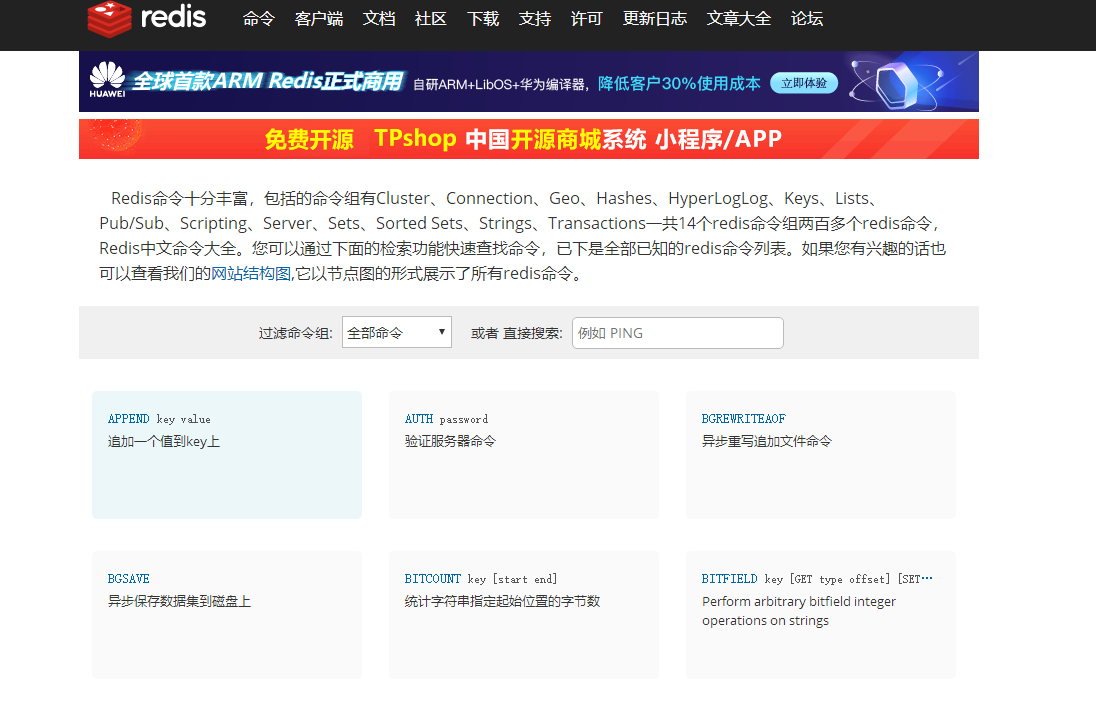
6 configuration property application.properties
spring.datasource.url=jdbc:mysql://127.0.0.1:3306/spring_cache
spring.datasource.username=root
spring.datasource.password=123456
spring.datasource.driver-class-name=com.mysql.jdbc.Driver
#Starting hump nomenclature
mybatis.configuration.map-underscore-to-camel-case=true
logging.level.mao.springcache.mapper=debug
#Because the redis I installed doesn't have a password, just give the host address.
spring.redis.host=192.168.1.139
7 test the Redis cache. First, see how the source code is written.
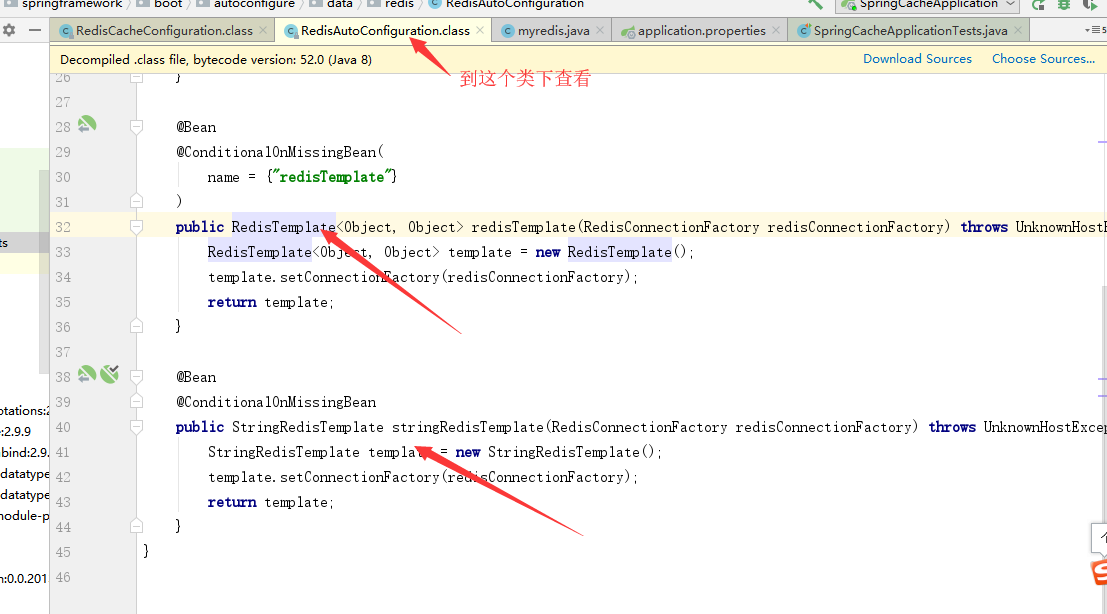
public class SpringCacheApplicationTests {
//Operation key value pair, the default serialization mechanism of jdk @Autowired RedisTemplate redisTemplate; //Operation string @Autowired StringRedisTemplate stringRedisTemplate; @Autowired RedisTemplate<Object,Employee> redisTemplate1; [@Test](https://my.oschina.net/azibug) public void test1(){ //stringRedisTemplate.opsForValue().append("hello","hello"); System.out.println(stringRedisTemplate.opsForValue().get("hello")); } [@Test](https://my.oschina.net/azibug) public void test2(){ Employee employee = employeeMapper.getEmployee(1); redisTemplate.opsForValue().set("emp-01",employee); } @Test public void contextLoads() { Employee employee = employeeMapper.getEmployee(1); System.out.println(employee.toString()); }
}
Test result of test1 above:

The above test2 test results:

Next, solve the ugly problem above: we rewrite RedisTemplate, and we want the cache to be json when viewing.
@Configuration
public class myredis {
@Bean public RedisTemplate<Object, Employee> redisTemplate(RedisConnectionFactory redisConnectionFactory) { RedisTemplate<Object,Employee> template = new RedisTemplate<Object, Employee>(); template.setConnectionFactory(redisConnectionFactory); Jackson2JsonRedisSerializer<Employee> ser = new Jackson2JsonRedisSerializer<Employee>(Employee.class); template.setDefaultSerializer(ser); return template; } }
The principle has been shown in the previous picture.
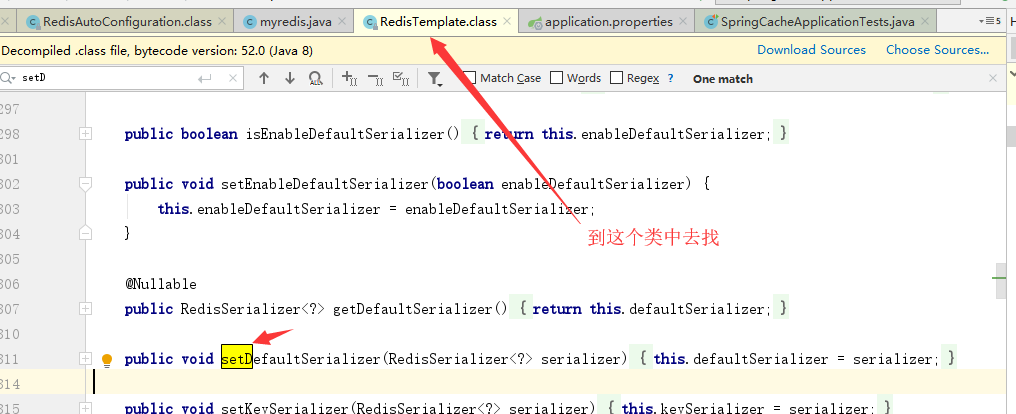
The following figure explains the sentence Hal template. Setdefaultserializer (SER);
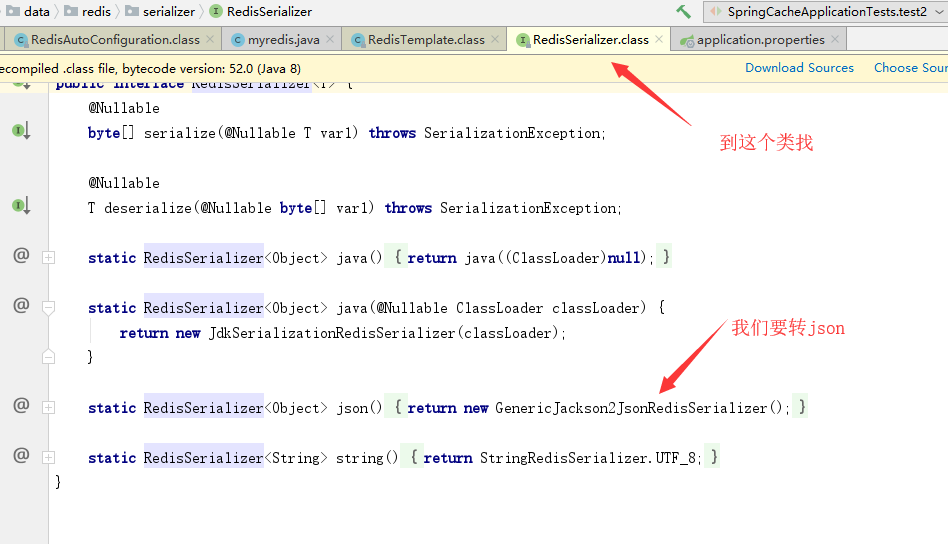
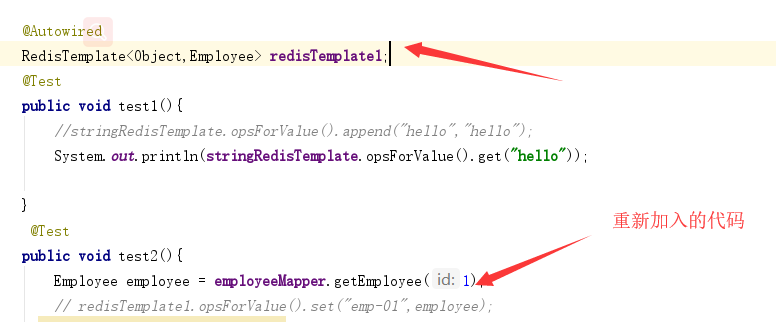
Retest results

8 next, I'll talk about using in spring project //EmployeeService class
@Service
public class EmployeeService {
@Autowired EmployeeMapper employeeMapper; //Cache the result of the method, request the same data in the future, and get it directly from the cache without calling the method //CacheManager manages multiple Cache components. Each Cache group has its own unique name for the real CRUD component of the Cache. //Several attributes, specifying the cache name key, can specify @ param id @Cacheable(cacheNames ={"emp"}) public Employee getEmp(Integer id){ System.out.println("query"+id+"staff"); Employee employee = employeeMapper.getEmployee(id); return employee; } //The cache is updated synchronously. The key to get the cache is the same as the key to put the cache. @CachePut(cacheNames = "emp",key = "#employee.id") public Employee updateEmp(Employee employee){ employeeMapper.updateEmp(employee); return employee; } @CacheEvict(value = "emp",key = "#id") public void deleteEmp(Integer id){ System.out.println("deleteEMp"+id); public Employee getEmployeeByLastName(String lastName){ return employeeMapper.getEmpByLastName(lastName); }
}
EmployeeMapper code
public interface EmployeeMapper {
@Select("select * from employee where id =#{id}") public Employee getEmployee(Integer id); @Update("update employee set lastName=#{lastName},email=#{email},gender=#{gender},d_id=#{dId} where id =#{id}") public void updateEmp(Employee employee); @Delete("delete * from employee where id=#{id}") public void deleteEmpById(Integer id); @Insert("insert into employee(lastName,email,gender,d_id) values(#{lastName},#{email},#{gender},#{dId})") public void insertEmpployee(Employee employee); @Select("select * from employee where lastName=#{lastName}") public Employee getEmpByLastName(String name);
}
EmployeeController.java
@RestController
public class EmployeeController {
@Autowired EmployeeService employeeService; @RequestMapping("/emp/{id}") public Employee getEmployee(@PathVariable("id") Integer id){ Employee employee=employeeService.getEmp(id); return employee; } @GetMapping("/emp") public Employee updateEmp(Employee employee){ System.out.println("Method call for employee update"); Employee employee1 = employeeService.updateEmp(employee); return employee1; } @GetMapping("/delete") public String deleteEmp(Integer id){ System.out.println("Delete information about an employee"); return "Delete staff"; } @RequestMapping("/emps/{lastName}") public Employee getByLastName(@PathVariable("lastName") String lastName){ return employeeService.getEmployeeByLastName(lastName); }
}
Configuration note of application class

The following is what I want to write most. At that time, I couldn't write the video of shangxuetang. Because of the different versions, I used 2.xxx.
Here is my configured RedisCacheManager
@Configuration
public class myredis {
@Bean
public RedisCacheManager redisCacheManager(RedisConnectionFactory redisConnectionFactory){
Jackson2JsonRedisSerializer<Employee> ser = new Jackson2JsonRedisSerializer<Employee>(Employee.class); RedisCacheConfiguration config = RedisCacheConfiguration.defaultCacheConfig() .serializeValuesWith(RedisSerializationContext.SerializationPair.fromSerializer(ser)); RedisCacheManager cacheManager = RedisCacheManager.builder(redisConnectionFactory) .cacheDefaults(config).build(); return cacheManager;
}
} This writing is obviously different from 1.xx.
Here is the 2.xx source code
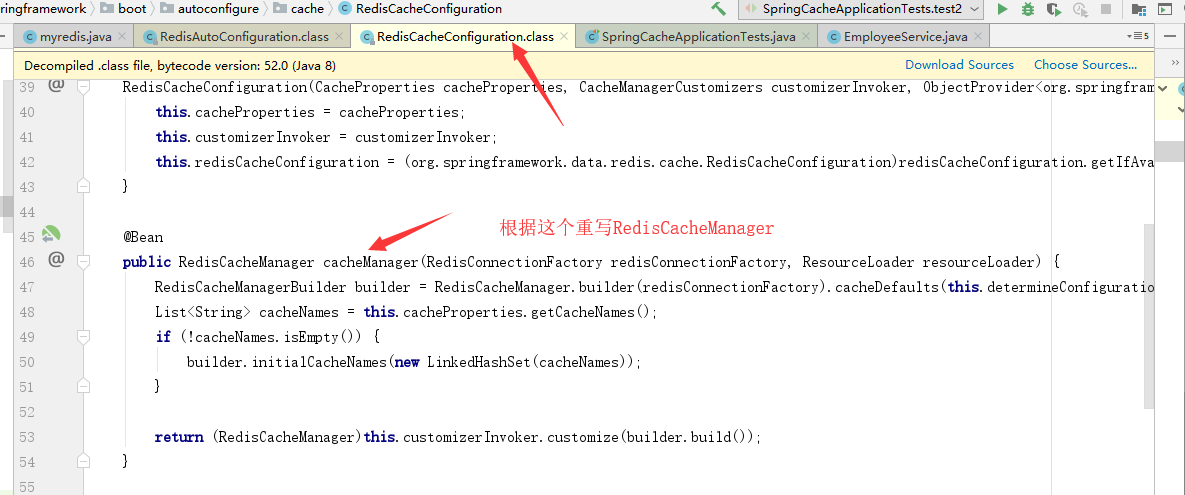
The picture below explains this sentence
RedisCacheConfiguration config = RedisCacheConfiguration.defaultCacheConfig()
.serializeValuesWith(RedisSerializationContext.SerializationPair.fromSerializer(ser));
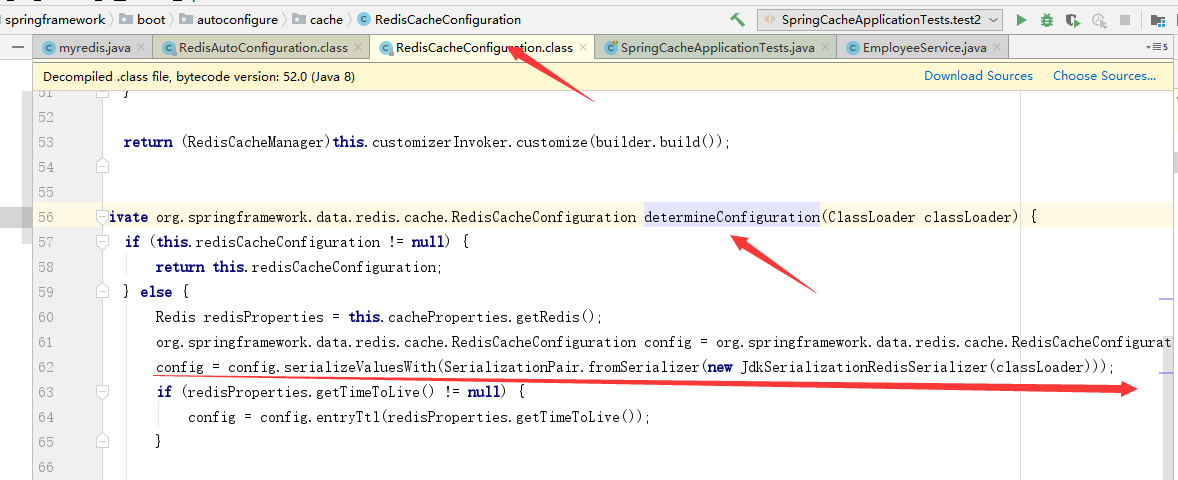
test result

